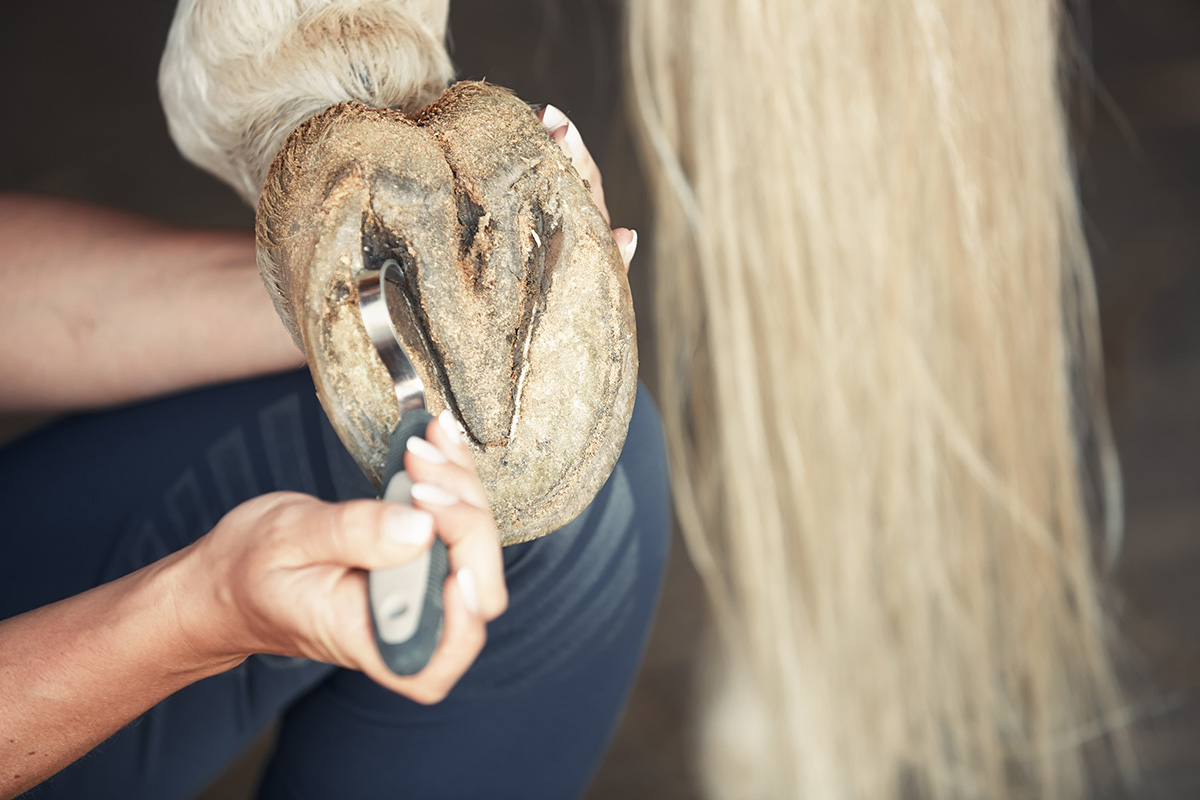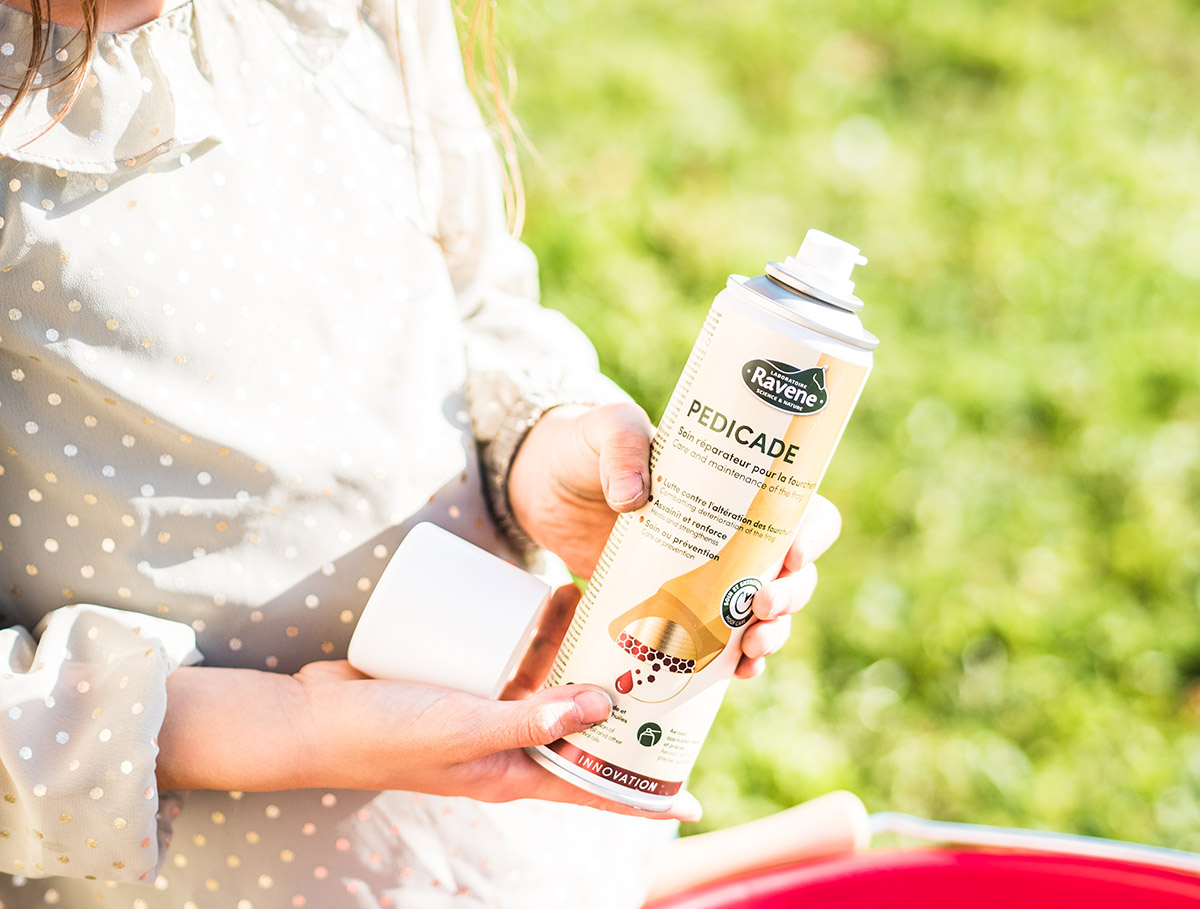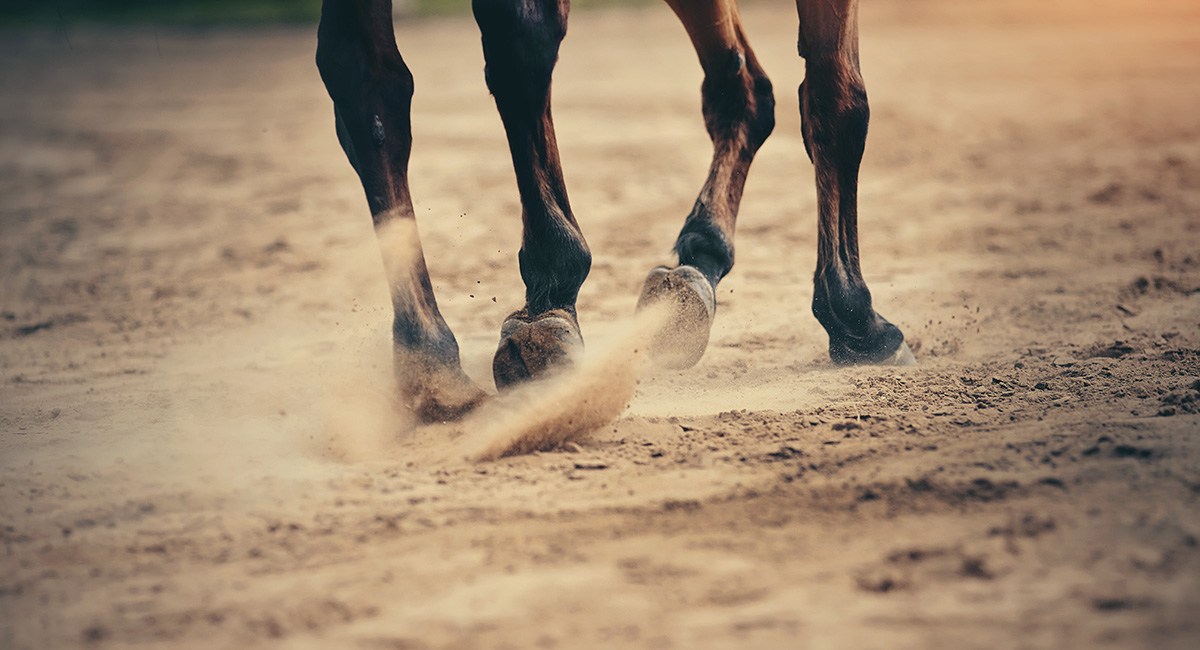Your horse’s hooves are impacted by weather and the soil characteristics of its environment. Regardless your horse’s way of life, winter season often causes damage to the feet, especially to the frog. Change in season and alternating rain and heat can also be considered as risk factors. Because of its sensitivity and of the big role it plays in horse biomechanics, the frog needs to be pampered!
In wet environments, the latter can easily get soft or even start to crumble. How do we prevent this event – that worries lots of horse owners – and how to we tackle this once it has already started to affect our horse?
There are two key points in maintaining and keeping your horse’s frogs protected in winter times:
- Dry environment!
According to your horse’s way of life, it can be more or less difficult to have its feet on dry soils. For horses living in a box or subjected to a box formula offering daily outings to the paddock/field, it is required to thoroughly manage the bedding. Indeed, if the latter is soaked in urine or droppings, it will ruin all your frog upkeep efforts! Your horse needs to have its feet on a dry environment, on a clean bedding.
When it comes to horses living in the field, if they can access a shelter with bedding, no exception can be made regarding its upkeep. If the horses do not have a shelter, the best is to ensure that the field is big enough, to avoid generating muddy areas. Thanks to a regular care with juniper oil, the frog should be able to cope with meadow moisture. The wetland is causing way less issues to the feet than dirty bedding…!
- Regular feet upkeep using tailored products
It is necessary to regularly take care of your horse’s feet. It all starts with a meticulous foot cleaning. Do not hesitate to get a hard-haired brush, to make sure you get all the remaining dirt and sand. Once the foot is cleaned, comes the question of which product to apply.

Horse’s frog care: ointment, oil, or tar?
To each its characteristics, and their application is not negligible when it comes to the frog! During winter times, it is better to go for an oil such as Pediflex, or a tar like Pediblok, over the ointments (for the hooves’ bottom part). However, you must pay a close attention to the tar’s application! It should indeed be applied on dry hooves and healthy frogs only. It will then create a protective barrier to keep moisture from getting into the feet (useful for your trainings in wet outdoor arenas for instance).
On the other hand, if applied to a wet foot (even slightly wet…) the tar is going to lock up the humidity in the hooves, especially on the frog, and will actually create more issues! If you have the slightest of doubts, if the feet are not completely dry or if the frog is a bit soft, it is best to go for hoof oil! It hydrates and strengthens the hooves while allowing it to let the moisture go out. Hoof oil really is your dearest ally during winter.
If, even with this regular upkeep, the frog gets impaired, then juniper oil is a perfect solution. Contrary to tar – that should not, in any case, be applied to damaged frogs – juniper oil can help!
Apply our product Pedicade (based on juniper oil) on the frog, on a daily basis, until obtaining satisfying results, then space out the applications. You can absolutely use it as a prevention treatment during your regular grooming sessions, once a week, alongside hoof oil.

Note that it is still possible to use ointments such as Pedigard Black, on the top of the feet, during winter times, thanks to its waterproofing action: it helps storing water in the feet, thus limiting dryness, but also acts as a barrier against external attacks.
Finally, depending on his feet’s nature, your horse may need additional support. In that case, a feed supplement such as Biodyne (based on biotin) will promote the hooves’ growth and strength.
To sum it up, by maintaining your horse’s feet regularly, using tailored products, and by closely monitoring the state of the soils on which he lives, you’re all set for winter! And your horse’s frogs are protected.
Keep in mind that, once the frog is impaired, it is a long and complex process to get it back to normal. The best for the both of you is thus to maintain a regular upkeep, and avoid it getting damaged in the first place! “Better safe than sorry”!
Thank you for reading,
Amélie







